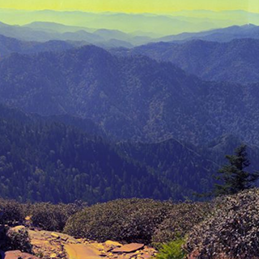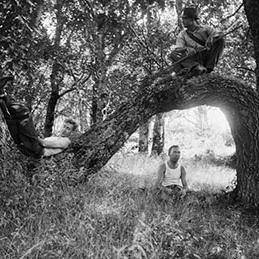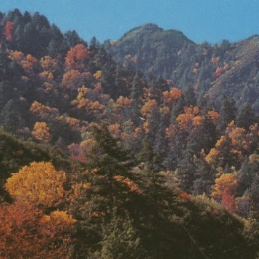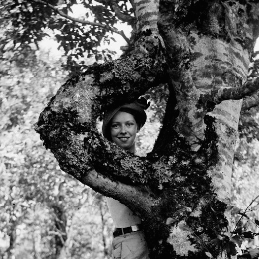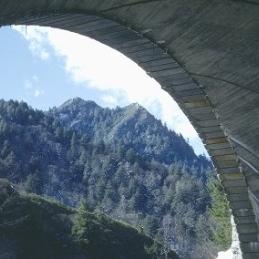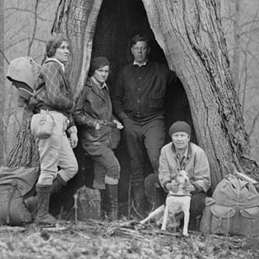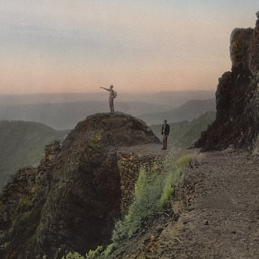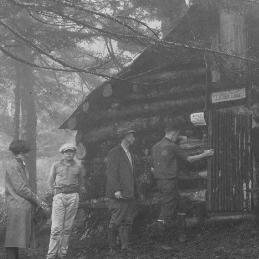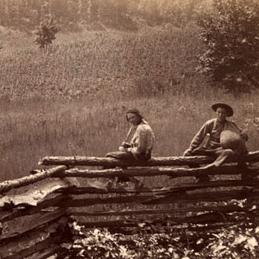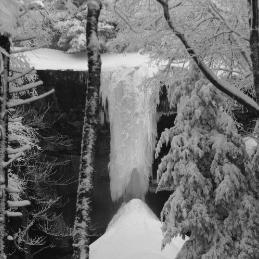Browse
"Herbaceous-Layer Impoverishment in a Post-Agricultural Southern Appalachian Landscape." American Midland Naturalist 162, no. 1 (2009): 148-168.
"A new cost-distance model for human accessibility and an evaluation of accessibility bias in permanent vegetation plots in Great Smoky Mountains National Park, USA." Journal of Vegetation Science 20 (2009): 1099-1109.
"Forward." Southeastern Naturalist 6, no. sp2 (2007): 1-26.
"Impacts of an Exotic Disease and Vegetation Change on Foliar Calcium Cycling in Appalachian Forests." Ecological Applications 17, no. 3 (2007): 869-881.
"The Influence of Logging and Topography on the Distribution of Spruce-Fir Forests Near Their Southern Limits in Great Smoky Mountains National Park, USA." Plant Ecology 189, no. 1 (2007): 59-70.
Predicting the Invasion of the Exotic Species Paulownia tomentosa Following Burning in Pine and Oak-Pine Forests of the Mountains In Joint Fire Science Project. Chapel Hill, NC: The University of North Carolina, 2006.
"Cornus florida L. Mortality and Understory Composition Changes in Western Great Smoky Mountains National Park." Journal of the Torrey Botanical Society 129, no. 3 (2002): 194-206.
"The Distribution of Heath Balds in the Great Smoky Mountains, North Carolina and Tennessee." Journal of Vegetation Science 12, no. 4 (2001): 453-466.
"Modeling the Distributions of Species and Communities in Great Smoky Mountains National Park." Computers and Electronics in Agriculture 27, no. 1 (2000): 389-392.
Modeling the Occurrence of Rare Plant Populations at the Landscape Scale, Edited by Peter S. White. Chapel Hill, NC: University of North Carolina, 2000.
"Post-Fire Succession and 20th Century Reduction in Fire Frequency on Xeric Southern Appalachian Sites." Journal of Vegetation Science 11, no. 4 (2000): 465-472.
"High Elevation Outcrops and Barrens of the Southern Appalachian Mountains." In Savannas, Barrens, and Rock Outcrop Plant Communities of North America, edited by R. C. Anderson, J. S. Fralish and J. M. Baskin, 119-132. Cambridge: Cambridge University Press, 1999.
"Changes in Xeric Forests in Western Great Smoky Mountains National Park, 1936-1995." Castanea 63, no. 3 (1998): 364-360.
"Southern Appalachian Grassy Balds: Lessons for Management and Regional Conservation." In Ecosystem Management: Principles and Practices Illustrated by a Regional Biosphere Cooperative, edited by John Douglas Peine, 375-396. Boca Raton, FL: CRC Press, 1998.
"Vegetation of the Great Smoky Mountains National Park, 1935-1938." Castanea 63, no. 3 (1998): 323-336.
"Predicting Treeline Elevation in the Southern Appalachians." Castanea 62, no. 3 (1997): 137-146.
"High Elevation Rock outcrop Vegetation of the Southern Appalachian Mountains." Journal of Vegetation Science 7, no. 5 (1996): 703-722.
Wildflowers of the Smokies. Gatlingburg, TN: Great Smoky Mountains Natural History Association, 1996.
"Conserving Biodiversity: Lessons from the Smokies." Forum for Applied Reserach and Public Policy 10, no. 2 (1995): 116-120.
"Biomass and Production of Southern Appalachian Cove Forests Reexamined." Canadian Journal of Forest Research 23, no. 4 (1993): 760-765.
"Effects of Area on Old-Growth Forest Attributes: Implications for the Equilibrium Landscape Concept." Landscape Ecology 8, no. 2 (1993): 119-126.
"Gradient Analysis of Old Spruce – Fir Forests of the Great Smoky Mountains circa 1935." Canadian Journal of Botany 71, no. 7 (1993): 951-958.
Lterm: Long-term Monitoring and Research in Great Smoky Mountains National Park: Vegetation Monitoring and an Assessment of Past Studies In Technical Report. Chapel Hill, NC: North Carolina Botanical Garden; Department of Biology, University of North Carolina, 1993.
"Spruce-fir Forests of Eastern North America." In Ecology and Decline of Red Spruce in the Eastern United States, 3-39. Vol. 96. New York, NY: Springer-Verlag, 1992.






